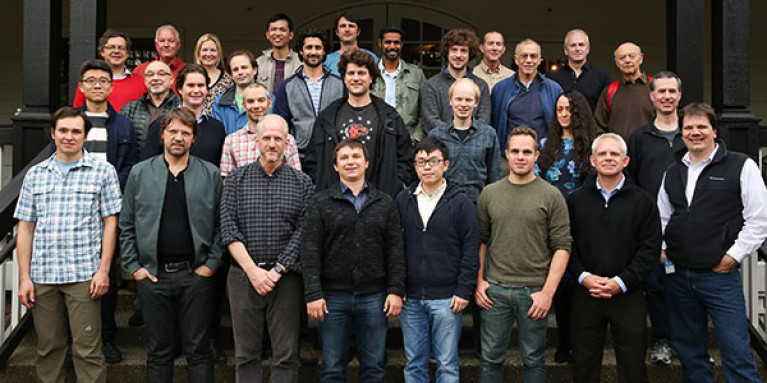
The 2016 QRetreat took place on Microsoft’s Redmond campus on April 28 and 29, 2016. QRetreat is an annual meeting of the Station Q Santa Barbara and Station Q Redmond teams. The goals of the meeting are to update each other on the recent research in an informal atmosphere and discuss current projects.
This retreat was organized as a series of short talks followed by discussion sessions. The range of topics was very broad, including recent developments in condensed matter physics, topological quantum computing, quantum algorithms, fault tolerance, quantum circuit design and compilers for quantum computers. This year’s retreat also featured talks by experimentalists who collaborate with Station Q from TU Delft, University of Sydney and Niels Bohr Institute.
 Station Q Redmond / QuArC team members presented two overview talks and three talks on ongoing projects. Nathan Wiebe gave an overview of the recent developments in quantum machine learning. It was interesting to hear about the different ways of thinking about both quantum machine learning and machine learning for quantum systems. You can find quite a few approaches to this in Nathan’s recent papers. Martin Roetteler presented his results on developing new quantum circuit libraries. Alan Geller told us about new developments related to compilers and programming languages for quantum computers. Matt Hastings shared some new ideas on quantum algorithms for small quantum computers. Vadym Kliuchnikov gave a short tutorial on small surface codes.
Station Q Redmond / QuArC team members presented two overview talks and three talks on ongoing projects. Nathan Wiebe gave an overview of the recent developments in quantum machine learning. It was interesting to hear about the different ways of thinking about both quantum machine learning and machine learning for quantum systems. You can find quite a few approaches to this in Nathan’s recent papers. Martin Roetteler presented his results on developing new quantum circuit libraries. Alan Geller told us about new developments related to compilers and programming languages for quantum computers. Matt Hastings shared some new ideas on quantum algorithms for small quantum computers. Vadym Kliuchnikov gave a short tutorial on small surface codes.
Station Q Santa Barbara researchers chose to present their recent work on the theory of topological phases and many-body quantum systems. This kind of result usually gets less visibility at other meetings we have, and QRetreat is a great place to catch up on it. Maissam Barkeshli told us about his recent work on manipulating quantum information using topological charge projection. The work opens a new path towards achieving universal quantum computation using certain models of anyons that are not universal by braiding alone. Michael Freedman presented his result describing holographic entanglement. We learned that the min-flow max-cut principle, which is very familiar to computer scientists and graph theorists, can be applied to studying minimal surfaces in holographic systems and provide a new on holographic entanglement and the Ryu-Takayanagi formula. Michael Zaletel presented results on using DMRG to study physics of half-filled Landau level.
The retreat concluded with wine tasting and great food at DeLille Cellars!
Vadym Kliuchnikov
